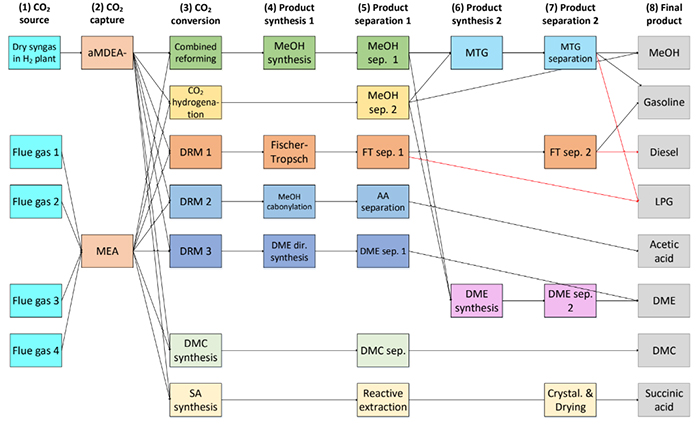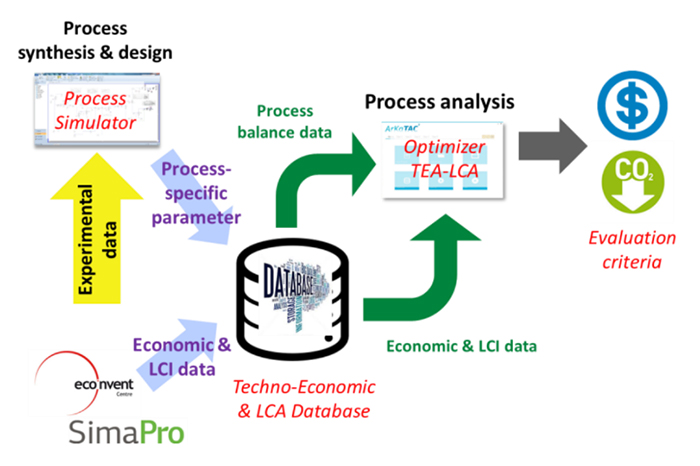As a research project of the Saudi Aramco–KAIST CO2 Management Center, Professor Jay H. Lee’s group in the Department of Chemical and Biomolecular Engineering (CBE) is studying CO2 reduction strategies for petroleum refineries through process systems engineering (PSE) approaches. This project was started in 2014 to work on the basic research to identify CO2 emission points over an actual refinery. Then, the team studied two CO2 reduction solutions: CO2 reduction by changing the refinery operation conditions and by implementing new plants.
In detail, the team developed a refinery-wide simulator that enables calculation of the amount of CO2 (due to fuel combustion) vented from the stacks of the key processing units in a refinery owned by Saudi Aramco. Support from Saudi Aramco personnel (Hasan Imran and Ali S. Hunaidy in R&DC) in acquiring the actual plant data accelerated the simulator development. In the case of adding new plants, refinery CO2 reduction through CO2 capture and conversion technologies (Figure 1) and through water and heat recovery was of interest. In particular, to analyze the sustainability of the newly designed plants, the team developed a computer-aided tool named ArKa-TAC3 (Aramco-KAIST / Tool for Analysis of CO2 Capture and Conversion system), which calculates key sustainability metrics of CO2 capture and conversion processes fast and efficiently (Figure 2).
Regarding this research project, six SCI journal papers were published, a domestic patent for a new acetic acid production process utilizing CO2 feedstock was filed, and the research outcome has been presented at more than ten international conferences. Furthermore, this August, the team has passed a stage gate meeting (the R&D project evaluation system inside Saudi Aramco) with lots of positive comments on the research outcome from the gatekeepers who represent various departments of Saudi Aramco (including CTO).
In the next three years, the team will invest more effort in demonstrating and commercializing the research outcome. In particular, the analysis software, ArKa-TAC3 , will be upgraded by expanding the database and interfacing it with other commercial software. Also, the refinery-wide simulator will be applied to actual refinery operation. For this, the scope of collaboration will be extended to include refinery operators working for Saudi Aramco.


Lee, Jay Hyung (Dept. of Chemical and Biomolecular Engineering)
Homepage: http://lense.kaist.ac.kr
E-mail: jayhlee@kaist.ac.kr






